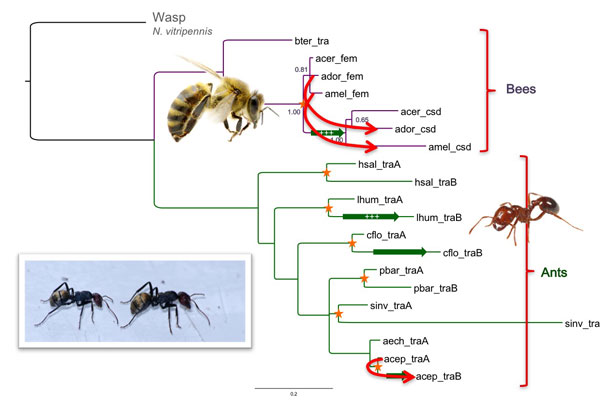Social insects rely on a complex chemical language for coordinating their activities. This requires both synthesis of a large array of pheromones and olfactory response to these pheromones. We study the genes responsible for both functions: odorant receptors that specifically bind and recognize pheromones; and the enzymes responsible for the synthesis of a major class of pheromones – the cuticular hydrocarbons. One of the most basic functions of the cuticular hydrocarbons is nestmate recognition. Different colonies display different mixtures of hydrocarbons on their cuticule, which allow the ants to discriminate between nestmates and non-nestmates. We use a range of genomic mapping techniques, population genomic and evolutionary analyses to identify the genes that underlie these chemical communication functions. Our main model species is the desert ant Cataglyphis niger, in which the cuticular hydrocarbons were studied extensively. This species also display a social polymorphism: some colonies are headed by multiple queens while others are headed by a single queen. We wish to identify the molecular genetic basis of this polymorphism, and to investigate the role of chemical communication in these behavioral differences.

